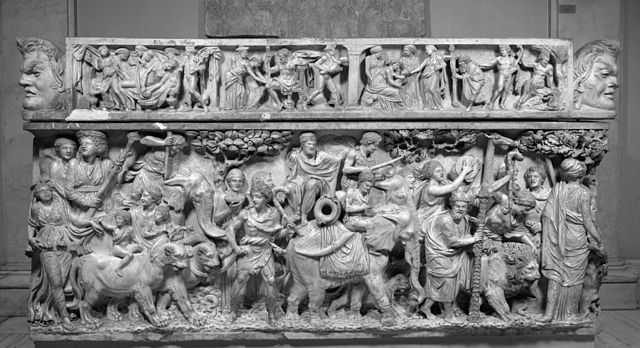The Dionysiaca is an ancient Greek epic poem and the principal work of Nonnus. It is an epic in 48 books, the longest surviving poem from Greco-Roman antiquity at 20,426 lines, composed in Homeric dialect and dactylic hexameters, the main subject of which is the life of Dionysus, his expedition to India, and his triumphant return to the west.
The triumph of Dionysus, depicted on a 2nd-century Roman sarcophagus. Dionysus rides in a chariot drawn by panthers; his procession includes elephants and other exotic animals.
Detail of papyrus codex showing Dionysiaca 15. 84–90 (P.Berol. inv. 10567, 6th or 7th century).
The battle of Zeus and Typhon. Side B from a Chalcidian black-figured hydria, c. 550 BC.
Jove and Semele (c. 1695) by Sebastiano Ricci
Nonnus of Panopolis was the most notable Greek epic poet of the Imperial Roman era. He was a native of Panopolis (Akhmim) in the Egyptian Thebaid and probably lived in the 5th century CE. He is known as the composer of the Dionysiaca, an epic tale of the god Dionysus, and of the Metabole, a paraphrase of the Gospel of John. The epic Dionysiaca describes the life of Dionysus, his expedition to India, and his triumphant return. It was written in Homeric Greek and in dactylic hexameter, and it consists of 48 books at 20,426 lines.
Mosaic of Dionysus from Antioch





